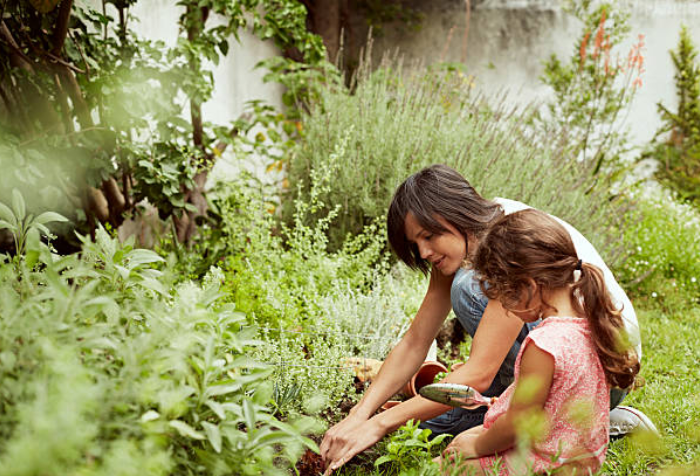Practical Tips for Everyday Green Habits
Sustainability is not just a buzzword; it's a movement that's rapidly gaining traction worldwide. With the environment at a critical juncture, adopting sustainable living practices has become imperative for maintaining a healthy planet. As an eco-conscious consumer, sustainability enthusiast, or green living advocate, you're part of this vital movement. In this post, we'll explore practical strategies and real-life examples of sustainable living to inspire your own green transformation.
Understanding Sustainable Living
Sustainable living is a lifestyle that aims to reduce individuals' and society's use of Earth's natural resources and personal resources. It is about living in harmony with the environment, promoting ecological health, and recognizing that everything we do has an impact on the planet. Key pillars of sustainable living include conserving resources, protecting biodiversity, and respecting ecosystems.
Practical Tips for a Greener Life
Sustainable living can seem daunting at first, but there are countless small changes you can make to live a more eco-friendly life. Here are some practical tips for integrating sustainability into your daily routine.
Reducing Household Energy Consumption
Making your home more energy-efficient is a significant step towards sustainability. Simple changes can lead to substantial reductions in your household's carbon footprint and energy bills. Save energy by:
- Switching to LED lightbulbs.
- Unplugging electronics when they're not in use.
- Using energy-efficient appliances.
- Installing a smart thermostat to regulate home temperatures.
Minimizing Waste
Waste generation is a grave environmental concern. Adopting a zero-waste approach can significantly reduce landfill waste. To minimize waste, consider:
- Composting food scraps and yard waste.
- Investing in reusable items like shopping bags, water bottles, and storage containers.
- Repurposing or recycling items instead of throwing them out.
- Buying in bulk to reduce packaging waste.
Sustainable Shopping
Supporting sustainable products and businesses encourages a shift towards an eco-friendlier economy. When shopping, look for products that are:
- Locally sourced or produced, to reduce transportation emissions.
- Organic or sustainably harvested, to minimize the use of harmful chemicals and exploitation of resources.
- Minimalist in terms of packaging to reduce waste.
- Certified by reputable environmental organizations.
Green Transportation
The transportation sector is one of the largest contributors to greenhouse gas emissions. Opting for greener forms of transportation can have a significant positive impact on the environment. Consider:
- Walking or cycling for short trips.
- Using public transport or carpooling to reduce the number of vehicles on the road.
- Investing in an electric or hybrid vehicle.
- Planning your errands to reduce the number of trips you take.
The Impact of Everyday Green Habits
Adopting sustainable practices in your everyday life can lead to a multitude of positive impacts. You're not only contributing to global environmental preservation but also enhancing your own well-being by:
- Breathing cleaner air in your home and community.
- Eating fresher, locally sourced foods that are often healthier and more nutritious.
- Building a sense of community and shared purpose with others who value sustainability.
Real-Life Examples of Sustainable Living
Many communities and individuals have already made the switch to sustainable living and are seeing inspiring results. For instance:
- Community garden projects that promote biodiversity and provide fresh produce.
- Individuals and families that have significantly reduced their waste production through careful consumption and recycling.
- Cities and towns implementing green infrastructure projects to reduce carbon emissions and support energy efficiency.
Overcoming Common Challenges
While the path to sustainable living is rewarding, it can also present challenges. Common obstacles include financial constraints, lack of time, and limited access to sustainable products and services. Overcome these hurdles by:
- Starting small with changes that require little to no additional resources.
- Investing in high-quality, long-lasting products that will save money and resources in the long run.
- Seeking out community resources and support networks to share the burden and benefits of sustainability.
Whether you're just starting your sustainable living journey or looking to enhance your current practices, every action counts. What will you do today to contribute to a greener tomorrow? Share your experiences and challenges with others, and collectively, we can make significant strides towards a more sustainable world.
References and Additional Resources:
Continue your sustainable living education with these references and resources:
-
Environmental Protection Agency's guide to sustainable living
-
The 2030 Palette by Architecture 2030, a guide to sustainable design and construction
- The Ocean Cleanup, an organization dedicated to removing plastic from the world's oceans
- The Story of Stuff Project, an initiative to change the way humans make, use, and throw away 'stuff' to create a more sustainable and just world.
-
The 2030 Palette by Architecture 2030, a guide to sustainable design and construction
